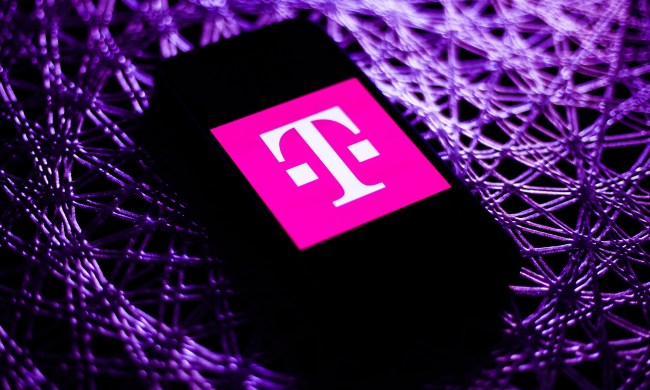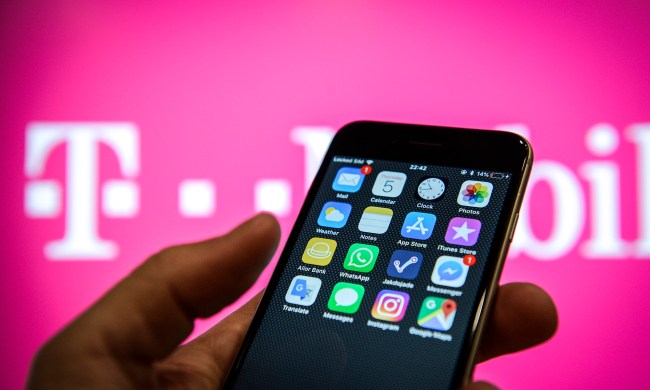Rumors and news about T-Mobile and Sprint merging circulated for years — but now the two have finally made it happen. After years of legal battles and new conditions, Sprint and T-Mobile have merged into the “New T-Mobile,” and Sprint as we know it is no more.
In April 2018, ex-T-Mobile CEO John Legere took to Twitter to officially announce the merger, saying the two companies “have reached an agreement.” He posted a video of himself alongside Sprint CEO Marcelo Claure that provided some details on the merger. And the mobile carriers submitted a formal application to the Federal Communications Commission on June 18, 2018, officially beginning the regulatory review process for the $26 billion deal.
The combined company has more than 100 million customers, bringing it closer to rivals AT&T (141 million subscribers) and Verizon (150 million). The merger could mean an improvement in overall 5G wireless technology, which promises greater, more pervasive connectivity and faster speeds, but involves costly and complicated development efforts.
Here’s everything you need to know about the merger and what it means for you.
What will this mean for Sprint subscribers?
In the short term, Sprint subscribers are unlikely to see a huge shift in their prices or coverage, as there is a lot of technical and corporate work that has to be done before both companies will become one. Some Sprint customers with compatible phones may get better coverage thanks to T-Mobile’s network, however, again, that may take some time to truly materialize.
In the long term, Sprint subscribers should expect some major changes. In fact, they’ll cease to be Sprint subscribers at all, and will likely be rolled over onto T-Mobile. No announcements have been made just yet about what that means for Sprint plans, but if we had to guess we would assume that Sprint customers will be able to keep their current plan and pricing, with the option to upgrade to a newer T-Mobile plan if they want. That, however, is all based on speculation, and only time will tell how T-Mobile will handle Sprint customers.
T-Mobile has promised regulators that it won’t increase costs for subscribers for three years and that Sprint customers will be able to keep their benefits, like Hulu and Tidal access. It even says customers may get access to more benefits.
Apart from changes in plans, Sprint subscribers will get some serious benefits. Namely, they’ll eventually be able to take advantage of a much larger network, and T-Mobile’s growing 5G network.
What about T-Mobile subscribers?
T-Mobile subscribers won’t see any major changes in the short term, and in the long term, they may only see minor changes. Perhaps the biggest change for T-Mobile subscribers will be access to a larger combined network. But as mentioned, that’s a long-term change and is unlikely to happen for a while.
Eventually, T-Mobile will be able to offer better service and more features, thanks to its now huge wealth of spectrum. T-Mobile will likely even offer home internet over 5G to rural customers as Verizon has done.
It’s unclear if T-Mobile customers will eventually see Sprint benefits, like Hulu and Tidal. Considering T-Mobile’s current partnership with Netflix, it’s hard to see that happening, at least while that partnership is still in effect.
How long until Sprint is completely gone?
According to T-Mobile, it will take three years to completely integrate the two networks, but it’s currently unclear if that’s an estimate for just the technical side of things, or the customer base too. Either way, it will be a matter of years — not months — before Sprint is completely gone. This is a complicated process, both technically and in terms of the business structure.
Doesn’t this reduce competition?
Yes. This leaves the U.S. with just three major carriers. That said, only time will tell if the merger has a negative impact on the mobile service landscape as a whole, or if it will ultimately be worth it. T-Mobile has promised regulators that it won’t raise prices for three years after the merger is complete, but there’s no telling what will happen after those three years is up.
Where does Dish come in?
The question of competition did have regulators at least partly concerned — and that’s where Dish comes in. In seeking approval of the deal, T-Mobile and Sprint said that Sprint prepaid customers, including those on Boost and Virgin Mobile, will eventually be headed to Dish. Not only that, but they also said that Dish would get some of the combined company’s spectrum to build out its own network. And, Dish will get control of over 20,000 cell sites and retail outlets, and free access to the current T-Mobile network for as long as seven years.
Of course, it remains to be seen whether or not Dish can actually become a competitor to the three major networks in the U.S. It seems a long shot on paper, but time will tell.
Will this be good for T-Mobile’s 5G rollout?
T-Mobile and Sprint have long touted the rollout of 5G as a big reason to approve the merger, and they may have a point. T-Mobile has been a leader in 5G for a while, and even launched its nationwide mid-band 5G network towards the end of last year.
Still, the promise of 5G is much faster speeds and lower latency — and to achieve that, the company will need to continue its millimeter-wave rollout. It’s all a bit technical, but the gist of it is that higher frequencies can deliver more data over shorter distances. With Sprint and T-Mobile’s combined spectrum, the new company will more easily deploy a robust 5G network that covers both long-distance-but-lower-speed low-band spectrum, and short-distance-but-high-speed high-band spectrum.
The technicalities
On Sunday, June 17, 2018, T-Mobile CEO John Legere tweeted a video announcing that Sprint and T-Mobile had agreed to form a new company. In a press release from the same day, the combined companies were given a value of $146 billion. The company’s ownership would be split three ways, with Deutsche Telekom owning 42 percent and SoftBank Group holding 27 percent. The remaining 31 percent will be publicly owned.

Legere announced the new company would be named “the New T-Mobile,” Legere said he would serve as the new company’s CEO. However, he later announced he was stepping down, a change that became official on April 1, 2020, alongside the merger’s final approval.
“This isn’t a case of going from 4 to 3 wireless companies — there are now at least 7 or 8 big competitors in this converging market,” Legere said at the time. “And in 5G, we’ll go from 0 to 1. Only the New T-Mobile will have the capacity to deliver real, nationwide 5G. We’re confident that, once regulators see the compelling benefits, they’ll agree this is the right move at the right time for consumers and the country.”
One of those “compelling benefits” is likely to be job growth. The new company promises to employ at least 200,000 people in the U.S. That number is expected to grow as the “New T-Mobile” has pledged to invest $40 billion in infrastructure over the course of three years.
The other major promise is that 5G is coming for all. The New T-Mobile says it will be the only wireless provider with the capability to provide true 5G service. This, in theory, will force its competitors to invest in new technologies prompting the further spread of 5G.

“Going from 4G to 5G is like going from black and white to color TV,” Sprint’s Marcelo Claure said. “It’s a seismic shift — one that only the combined company can unlock nationwide to fuel the next wave of mobile innovation.”
Previous talks
T-Mobile and Sprint sat around a table in November 2017, when talks were said to have fallen apart due to an inability to agree on valuations. Before this, the two came close to merging in 2014, but the deal was cooled when concerns over antitrust were raised by President Barack Obama.
During the 2017 discussions, Legere said any merger would have to be in the long-term interests of shareholders. “We have been clear all along that a deal with anyone will have to result in superior long-term value for T-Mobile’s shareholders compared to our outstanding stand-alone performance and track record.”
In turn, Claure echoed the sentiment: “While we couldn’t reach an agreement to combine our companies, we certainly recognize the benefits of scale through a potential combination […] We are determined to continue our efforts to change the wireless industry and compete fiercely.”

During these merger talks in 2017, the carriers reportedly sought a merger without any asset sales, meaning each would keep the maximum amount of its respective “spectrum holdings and cost synergies … before regulators ask for concessions.” Such an approach could face serious questions from regulators as the Federal Communications Commission prohibits rival carriers from conspiring during airwave auctions. The carriers likely saw a very real concern that such a scheme could be rejected by antitrust regulators with the Department of Justice. Administration changes in both the Justice Department and FCC made such a rejection less likely, however.
“It is better for Sprint and T-Mobile to listen and learn the concerns of regulators first, and see whether there is anything that can be done to address those concerns,” MoffettNathanson research analyst Craig Moffett said of the impending deal.
Updated on April 2, 2020: The merger between T-Mobile and Sprint is now complete.



